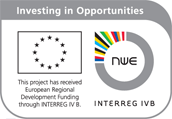Fine-scale rainfall nowcasting
Comparison was made of a number of traditional radar adjustment or radar – rain gauge merging methods, including the Mean Field Bias, Range-dependent and Brandes adjustment methods; kriging based rain gauge interpolation to radar methods (e.g. Kriging with External Drift: KED) as well as co-kriging, Kalman filter based and Bayesian merging methods. Also, more advanced methods based on dynamic adjustment and a newly proposed approach based on quantile mapping were tested.
General conclusion from that comparison was that radar based rainfall estimates need adjustment to or merging with rain gauges in order to remove the bias. Most methods perform well, but Bayesian merging methods appear to be the better ones. One general shortcoming identified for the existing methods, is that they often spatially smooth out the peak rainfall intensities during extreme thunderstorms. Given that these peak intensities are of utmost importance for urban hydrological applications, a new advanced merging method has been developed. The method identifies the extreme rain cells in radar images as local singularities and explicitly addresses these singularities in the merging process.
Click on the links below to access information (scientific papers) on these methods and comparisons.
-
New advanced singularity sensitive radar – rain gauge merging method: new advanced method for improved radar based rainfall estimation for urban hydrological applications, explicitly considering extreme rain cells as local singularities in the merging process. This method was developed by partners from KU Leuven and Imperial College London. Additional information: See publication below. For a full list of publications, please visit our publications webpage.
-
Inter-comparison and evaluation of merging methods for urban hydrological applications: comparison of traditional and new advanced merging methods for the different pilot cases in the RainGain project. This comparison and evaluation was done in collaboration between partners from KU Leuven and Imperial College London. Additional information:



